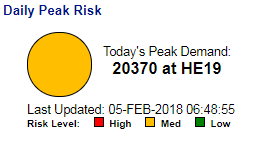The recently released Ontario Chamber of Commerce report on rising electricity prices has struck a chord in Ontario business owners. With some of the highest electricity prices in North America, staying competitive can be a constant headache for energy intensive sectors. Although Class B consumers can’t take advantage of Global Adjustment peak-shifting, you can try to control other aspects of your hydro bill.
As policy makers hash out these issues and choose whether or not to implement the OCC’s recommendations, lessen the effects of high electricity prices on your business’ bottom-line in three ways:
- Work with your utility or Rodan Energy to understand your monthly demand charges (kW) and hourly energy usage (kWh). The key for Class B consumers is to minimize electricity use at the most expensive times of the day by decreasing overall demand or by shifting usage to less expensive times of the day (ie. overnight or weekends). By lowering your demand peaks, you can still use the same amount of electricity but pay less by drawing electricity from the system at a slower rate. Conservation and demand management programs delivered by your utility can help with this process.
- Take advantage of government incentives. There are many different government programs that small and industrial businesses can take advantage of. Incentives for retrofits, equipment upgrades, and other efficiency projects are available, and energy audits can be also be subsidized. A building systems audit can be used to develop an energy conservation and management plan for your facility. Don’t underestimate the impact of these audits: behavioral changes around energy consumption can make a big difference and result in very significant savings.
- Enroll in Demand Response (DR) initiatives. To raise capital to invest in sustainable technology, or to create a new revenue stream, take advantage of your demand-side resources. Ontario is the only province in Canada that offers contractual DR programs. These programs compensate large energy consumers to reduce their electricity consumption during peak usage times. In December 2015, DR is moving towards an auction based market, meaning that DR capacity will be procured through a cost-competitive, annual auction delivered on the IESO energy market. DR can be incorporated into a business energy strategy to reduce operating expenses. Class B consumers are paid based on the load you’re able to curtail. The revenue from this can be used to invest in self-generation projects like solar panels, wind turbines or combined heat and power (CHP) systems to reduce withdrawal from grid.




